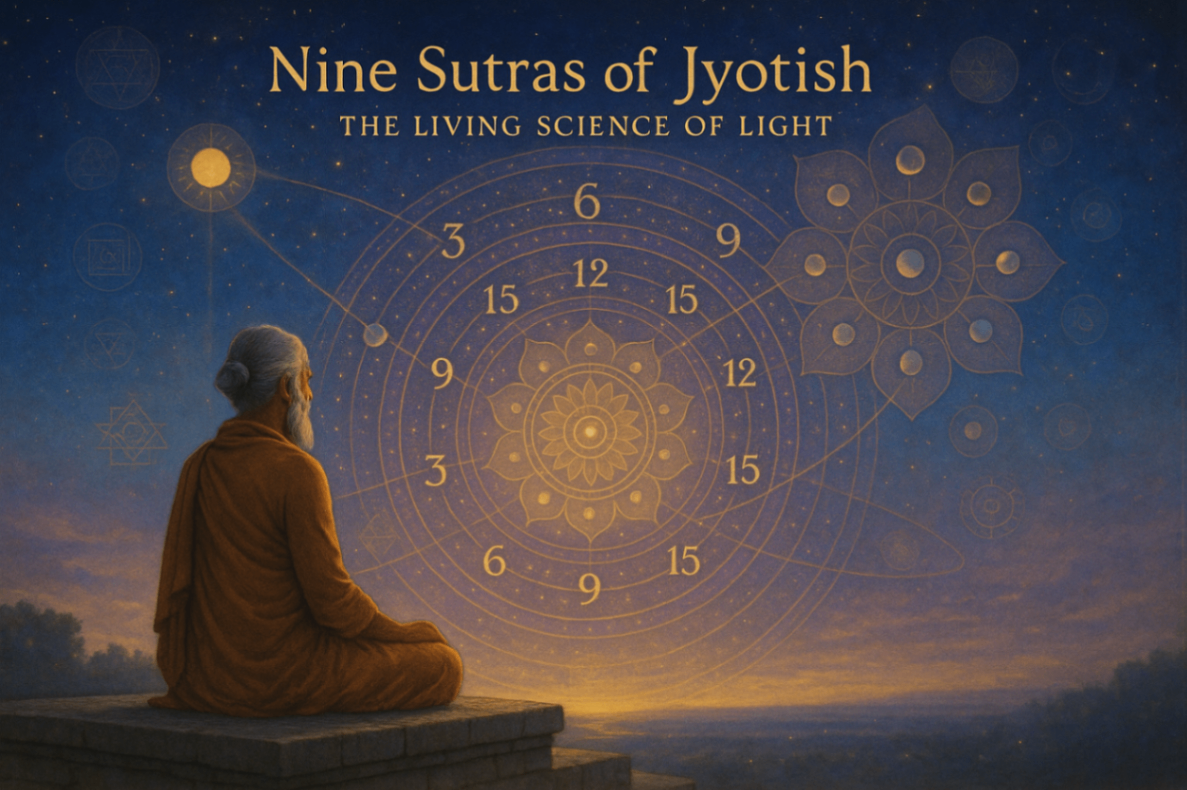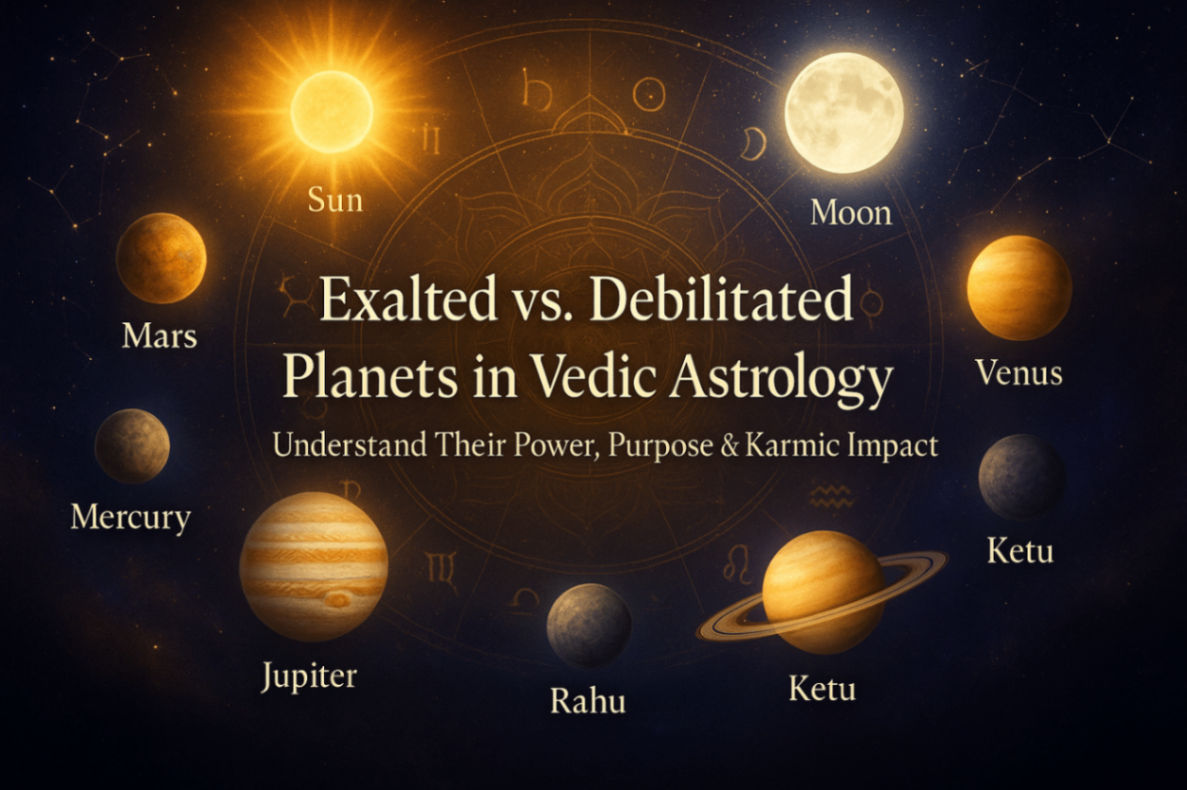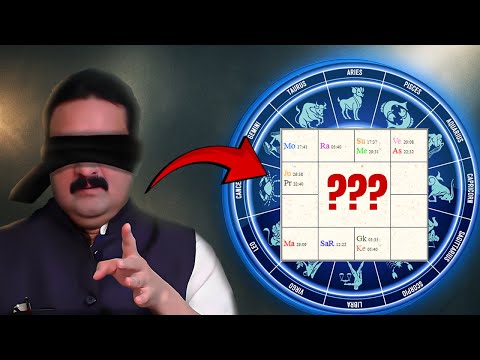Introduction to Divisional Charts in Vedic Astrology
In Vedic astrology, a single birth chart (Rashi chart) doesn’t reveal the complete picture. To understand deeper layers of karma, hidden influences, and specific life domains, astrologers use divisional charts, also known as D-Charts.
The main purpose of divisional charts is to dissect a particular area of life (like marriage, career, children, or health) and see how planetary energies behave at a micro level.
🔍 What Youll Learn
What is a Divisional Chart?
Why D9 (Navamsa) is crucial for marriage
What “Ghor” divisions reveal about karma
How D-charts help in timing events precisely
Which divisional charts are useful for each life domain
What Is a Divisional Chart?
A divisional chart is a micro-snapshot of the main birth chart. It breaks down each sign into further divisions to explore specific life areas. Each divisional chart is derived mathematically using the planetary positions from the natal chart.
Common Divisional Charts:
D9 (Navamsa): Marriage and spiritual dharma
D10 (Dasamsa): Career and public life
D7 (Saptamsa): Children and creativity
D12 (Dwadasamsa): Parents and ancestry
These charts add granularity to readings, allowing astrologers to make accurate predictions when the Rashi chart alone seems ambiguous.
Importance of Divisional Charts for Predictions
Vedic astrology emphasizes that the Rashi chart shows the promise, while the divisional charts show the actual results.
Rashi chart = Karma’s potential
Divisional chart = Karma’s fruit
When a planet appears powerful in the birth chart but weak or afflicted in the D-chart, its results may be blocked or distorted, especially during its Dasha.
Ghor Division: Extreme Karma Unveiled
The word “Ghor” means intense, fierce, or extreme. In divisional charts, Ghor divisions represent zones of polarized karmic expression—where a planet may behave in an exaggerated or suppressed way.
🔹 Do Ghor Divisions Have Specific Degrees?
Unlike Vargottama or Pushkara degrees, Ghor divisions are not fixed degree-based. They are determined based on devata mapping of micro-divisions in charts like D9 and D60.
For example:
In D60, each 0°30′ division is ruled by a devata.
Certain devatas like Rudra, Kali, Shani, Yama symbolize intense karma.
If a planet falls in such a devata-ruled division, it may manifest in extremes—either as obsession, denial, or distortion.
🔹 Real-life Effects of Ghor Planets
Moon in Ghor: Emotional extremes, unstable relationships, strange food habits
Venus in Ghor: Relationship turbulence, artistic fame and downfall
Saturn in Ghor: Excessive responsibility or total apathy
These effects often peak during the planet’s Mahadasha or Antardasha.
🔹 Ghor vs Pushkara vs Vargottama
| Concept | Degree-Based? | Predictive Use | Nature |
|---|---|---|---|
| Vargottama | Yes | Strengthens the planet | Balanced, auspicious |
| Pushkara Bhaga | Yes | Extremely benefic result | Spiritually and materially good |
| Ghor Division | No | Extreme karma expression | Polarized, intense, unbalanced |
🔹 How to Use Ghor in Analysis
To detect Ghor influence:
Use accurate birth time (even 2-minute errors affect D9/D60).
Check the D-chart (D9, D60) for devata assignments.
Identify if the planet lies in a division ruled by a “Ghor” devata.
Match with life events or emotional states.
Ghor placements are often linked to time rectification, sudden life reversals, and behavioral polarity.
Devata Mapping in Divisional Charts
Each D-chart and planetary placement has a ruling devata (deity). These devatas offer insights into spiritual assignments and karmic contracts.
Examples:
Sun in D24 (Education) under Saraswati Devata = educational gifts
Moon in D60 under Nag Devata = ancestral emotional karma
Understanding these mappings refines prediction and remedies.
Which Divisional Charts to Use When?
| Chart (D-n) | Name | Primary Use |
| D1 | Rashi | General life overview |
| D9 | Navamsa | Marriage, dharma, inner self |
| D10 | Dasamsa | Career, success, public karma |
| D7 | Saptamsa | Children, lineage, creativity |
| D12 | Dwadasamsa | Parents, ancestral blessings |
| D60 | Shashtiamsha | Past life karmas, spiritual blocks |
| D24 | Chaturvimshamsha | Education, intelligence |
How to Use D-Charts for Prediction
Start with Rashi chart (D1)
Note planetary strength and house lordship
Check corresponding D-charts
For marriage: analyze 7th lord and Venus in D9
For career: see Sun and 10th lord in D10
Evaluate placement
Check dignity (exalted, debilitated, combustion, Ghor division)
Synthesize results
Match D-chart message with Rashi chart for accuracy
Time rectification
Minor birth time tweaks affect D-charts, especially D9 and D60
The Role of Ghati Lagna (GL) and Hora Lagna (HL)
In addition to divisional charts, Vedic astrology uses special lagnas such as Ghati Lagna (GL) and Hora Lagna (HL) to assess success, power, and financial capability in predictive readings.
🔹 Ghati Lagna (GL)
Purpose: Indicates influence, power, leadership, and authority in the world.
Usage: Especially relevant for career and government-related predictions.
Interpretation: Benefic planets conjoining or aspecting GL, or GL placed in good houses (like 10th), suggest recognition and success in life.
🔹 Hora Lagna (HL)
Purpose: Reveals insights into a person’s wealth, income, and material prosperity.
Usage: Very helpful in financial astrology and judging financial outcomes during planetary dashas.
Interpretation: If HL is influenced by benefics like Jupiter or Venus, especially in houses like 2nd or 11th, it can indicate strong financial potential.
These lagnas are time-sensitive and move quickly. Hence, like D-charts, they require precise birth time to calculate correctly.
Predictive Power of Divisional Charts
Skilled astrologers use D-charts for:
Precise event timing
Spotting imbalances in specific life areas
Finding hidden karmic baggage (especially in D60)
Time rectification for unknown or incorrect birth times
Comparative Chart Snapshot
| Feature | Rashi Chart (D1) | Divisional Charts |
| Scope | General Life | Specific Life Areas |
| Use | Promise | Manifestation |
| Timing Value | Medium | High (with Dasha support) |
| Precision | Broad | Sharp |
FAQs on Divisional Charts
Q1: What if my birth time is not accurate?
Divisional charts may give false signals. Use D-charts for time rectification first.
Q2: Can divisional charts override Rashi chart?
No. They refine but don’t cancel the promises of D1 chart.
Q3: Which is the most important divisional chart?
D9 (Navamsa) — for all spiritual and long-term life themes.
Key Takeaways
Use D-charts to see how karma unfolds in specific life domains
“Ghor” divisions show karmic extremes
Devata mapping helps understand spiritual assignments
Always match D-charts with Rashi chart for accurate predictions
Time rectification improves accuracy drastically
Final Thoughts
To truly learn predictive astrology, one must master the art of reading divisional charts. These tools reveal your micro-karma, offer deep spiritual insight, and enhance prediction precision.
Whether you are analyzing Navamsa chart secrets, exploring past life karma in D60, or doing time rectification, these charts are essential for any serious astrologer.





































